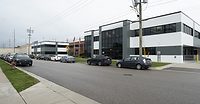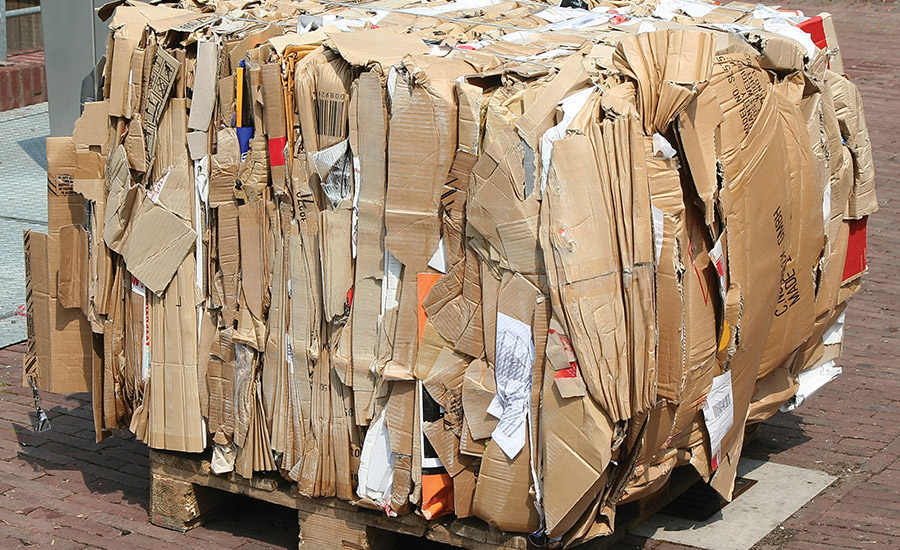Case Study
Promoting Sustainability with FIBCs
A bulk bag refurbishing program promotes quality and sustainability while reducing costs for raw materials suppliers and their customers.

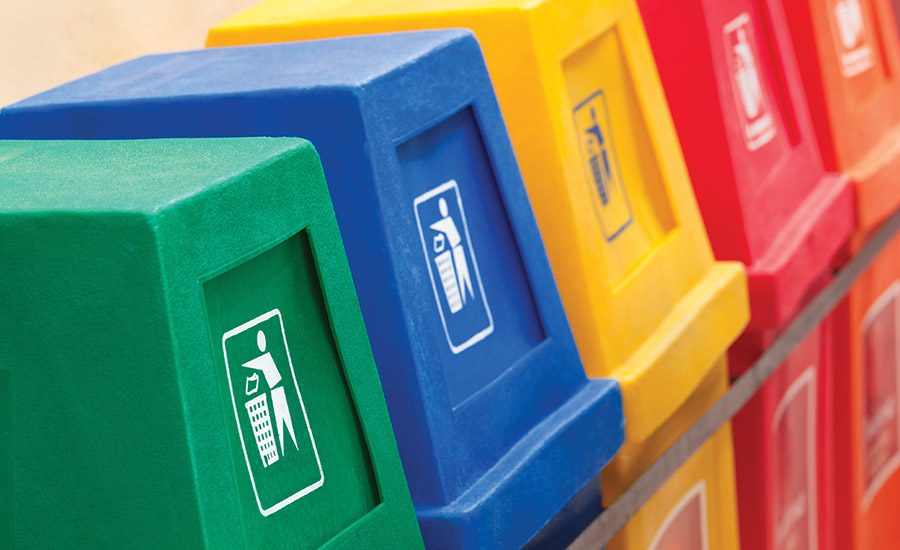



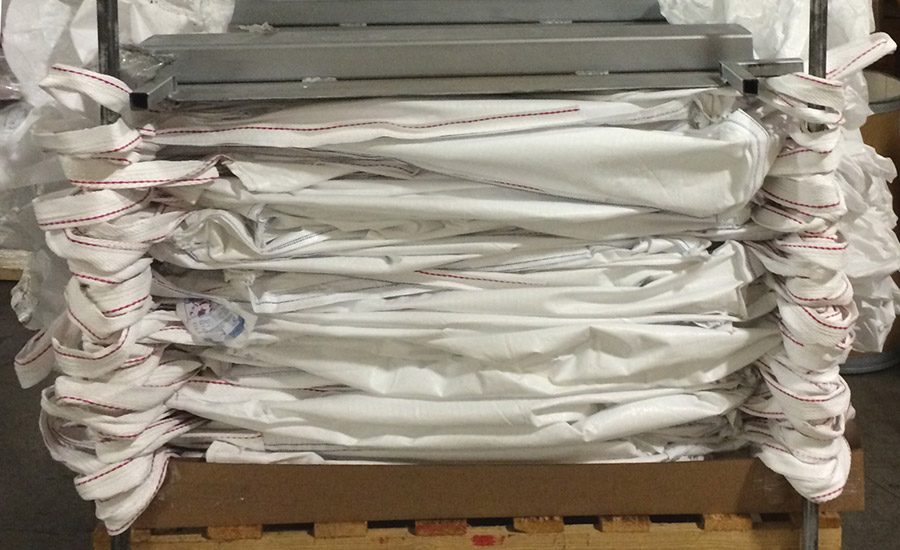
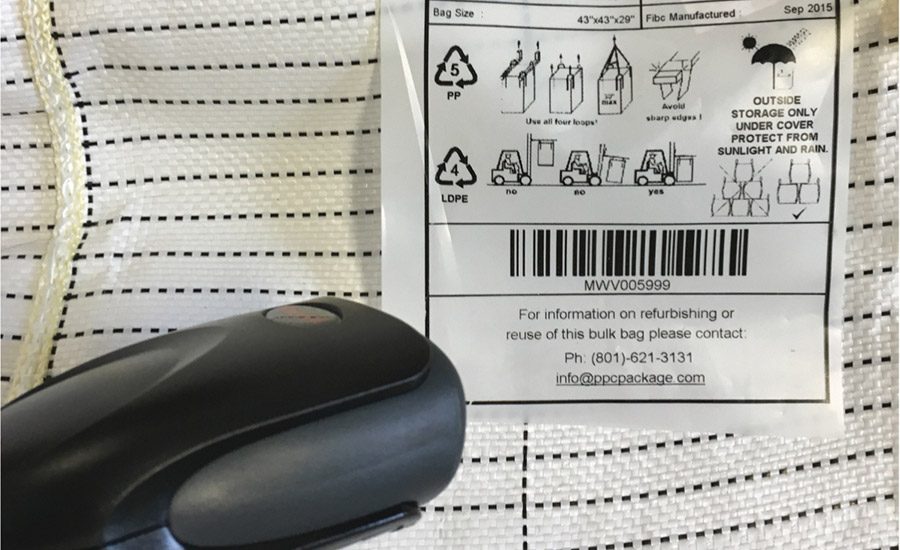
Once the returned, empty bags have been scanned and logged into PPC’s database, the refurbishing process begins.









Flexible intermediate bulk containers (FIBCs), also called “big bags,” are an industry staple to store and transport dry flowable materials, such as powders and granulated products. Compared to IBCs, Gaylords, boxes and other types of semi-bulk industrial containers, FIBCs are much lighter. Despite generally weighing just a few pounds, one FIBC can be used to safely and effectively transport up to several thousand pounds of material. In addition, when emptied, FIBCs can be folded and compressed for easy storage and transport.
If a manufacturing plant is loading a vat in a single load or utilizing an automatic feeder system, big bags become a more efficient means of transporting greater quantities of material in a single container. What might be transported in 40 or so 50-lb paper or plastic bags—which would each have to be handled, cut open, and dumped individually—can be transported in one FIBC big bag. “A lot of our customers have some form of a feeder system, making the big bags most efficient,” says Chuck Monzo, global market management team leader of the Adhesives Polymers business of Dexco Polymers. “Normally our product is supplied in 20-kg bags, and they’re cracked open to put into the mixer. But for our customers with the automatic feeder systems, it’s more efficient for them to use the bulk bags that hold nearly a metric ton of product.”
Environmental Factors
One drawback of FIBCs is that they are most often made of polypropylene, which has a large negative impact on the environment. After just one use, these big bags are normally sent to the landfill. With a stronger focus on sustainability and protecting the environment, companies are now looking for alternative methods that are more sustainable and environmentally responsible.
Instead of just getting one use out of a bulk bag, what if a company could safely use the same bag multiple times? PPC Inc. is a FIBC bulk bag supplier that offers a closed-loop bag refurbishing program. In 1999, PPC launched its Smart-Use™ program, which takes previously discharged bulk bags and refurbishes them for safe and efficient big bag reuse. The premises of the program are sustainability, affordability, and quality with a reliable supply chain. When a bag is reused instead of landfilled, not only is it good for the discharger’s environmental footprint, but it enables them to avoid increased waste-to-landfill metrics and associated disposal fees. In addition, bag reuse enables raw materials providers (fillers) to reduce costs vs. purchasing new bags. When refurbished through PPC’s program, the big bag experiences an average life of six or more uses, bringing the environmental impact of producing and disposing of the polypropylene bag to less than half that of the same amount of cardboard (the least obtrusive environmental packaging available).
“Those big bags, you used to have to throw them away, you had to landfill them,” says Monzo. “That’s an environmental issue. And every pound you send to a landfill incurs a disposal cost. If you reuse the bag, there’s less going to the landfill, which is the environmental benefit, and there’s less going to disposal, so there’s a disposal fee savings.”
Dexco Polymers, a supplier of styrenic block copolymers, partnered with PPC 10 years ago to begin a refurbishing program for its fleet of big bags. “We get questions from customers about what we’re doing to be more sustainable as a business and this is one of the programs we can present as something we’re doing on that front,” says Mark Jordan, supply chain manager.
Georgia-Pacific Chemicals recently finished a year-long pilot program and reported an average of six to eight uses of its bulk bags refurbished through PPC. “The refurbished bags seem to perform and look as good, or better, than brand new bags,” says Sathya Varadachari, marketing manager for Wood Adhesives. “Georgia-Pacific has a strong commitment to sustainability. We want to support environmentally responsible products and we want to try to do the best thing for the environment. Instead of having our customers dispose of or landfill bags after each use, PPC refurbishes them for re-use.... It's the right thing to do—not only for GP. Using this process allows us to reduce the number of bags going into landfills. The customer that we’ve worked with thus far has easily adopted the process and others are excited to roll out the process in their facilities.”
How Does Refurbishing Work?
The Smart-Use program is a collaboration between PPC, the raw material distributor, or filler, and the end user customer, or discharger (see Figure 1,
p. 55). PPC supplies all discharging plant customers with an empty bag racking and compressing system, along with associated training, allowing them to easily compress and return the empty bags to PPC’s refurbishing facility at no charge (for the equipment or freight).
“Customers enjoy the small, one pallet-sized footprint of our empty bag racking unit,” says Tyler Alexander, vice president of operations for PPC. “It is easy to use, saves floor space and makes their plant cleaner and neater. In addition, customers use our automated turnkey pickup scheduling as soon as bags are ready for pickup to ensure no extra floor space is used for the program.”
The refurbishing process can be used with bags that are already in use in the filler’s inventory, or with new-to-inventory bags that may be purchased by the filler from PPC. When empty, non-PPC manufactured bags arrive, each bag is sorted by the filling company, product type, and then affixed with a barcode so that each bag can be tracked throughout its use-cycles. (PPC-manufactured bags have barcode labels pre-affixed to each bag.)
Once the returned, empty bags have been scanned and logged into PPC’s database, the refurbishing process begins. If the bag has a liner, it is removed. Any necessary conductivity testing is done, and visual inspections of all lift straps and seams are performed. The bag is then raised for a detailed visual inspection while being inflated with a high-velocity blower to remove any remaining internal product or residual matter in the bag. The bag is rotated for continual inspection with high-intensity lighting in order to illuminate any potential remaining product, holes, tears, or other damage. A heat gun is used to remove any stickers placed on the bag by the filler or the discharging customer, and to strengthen the bond of any new repair patches required on the bag. Next, all tie straps and document pouches are checked for potential damage and new ones added if necessary. It the bag had a liner, a new liner is inserted.
The operator then logs the complete inspection status for that bag, including any damage found and any repairs made. Lastly, cleaned and refurbished bags are sent to quality control for final inspection, certification for next safe additional use, and palletizing. Approximately 100 finished bags per pallet are then covered with a protective shell and shipped back to the original product filler to start the process over. “We ensure the refurbished bag quality and certify it safe and ready for the next use,” says Tim Petracca, PPC president and CEO. “We typically see 99.98% bag cleanliness with products used in the adhesives and sealants industry.”
“The process all runs very smoothly,” says Michael Schumacher, part of the global and Americas supply chain management team for Bostik. “PPC really helps on their end. They help to facilitate the process in terms of clearing the discharged bags from the plant and taking them to their facility for refurbishment.”
When discharged bags are returned to the facility after discharge, they’re scanned and sorted, beginning the closed-loop refurbishing process all over again. “We’ve seen positive results at the plant and the corporate level,” says Schumacher. “At the plant, we’ve seen the ease of the process of refurbishing bags. On the corporate side, we’ve reduced our carbon footprint and become a more responsible company.”
Win-Win Benefits
With sustainability becoming an increasingly pressing issue in the public consciousness, companies are looking for new programs to enhance their sustainability initiatives in a cost-effective, yet high-quality way. Both dischargers and fillers can turn to the Smart-Use program to support their sustainability endeavors with a cost-effective process for the packaging supply chain.
“The Smart-Use program has been great for us,” says Danny Kyle, plant manager at Ingevity. “PPC has refurbished thousands of bags for Ingevity over the past years and we experienced no quality issues with any PPC-refurbished bags. They perform well, look good, are high quality, and provide a ready supply to us, as the big bags we ship to U.S. and Canada customers’ locations can be picked up, refurbished and turned around in weeks by PPC. This is a big advantage over the several months lead time when we have to order new bags coming from overseas.”
The program also enables companies to provide their customers with high-quality products while simultaneously enhancing their green footprints. “It was great to bring the Smart-Use program to our big bag customers,” says Mike Barch, Ingevity senior account manager, Industrial Specialties. “They enthusiastically embraced the program as they really get to enjoy the benefit of a lower waste-to-landfill stream and associated reduced disposal costs, with a cleaner, neater plant process, at no charge to them. From a sales perspective, it is a nice benefit to bring to them, and they feel good about being part of a sustainable FIBC supply chain.”
For more information, email tim.petracca@ppcpackage.com or visit www.ppcpackage.com.
Looking for a reprint of this article?
From high-res PDFs to custom plaques, order your copy today!





